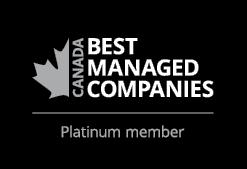In any given week, 500,000 Canadians are unable to work due to mental health issues. Many employers, however, are unaware that the vast majority of common diseases that sideline employees and form the bulk of disability claims can be managed through improved health habits and behaviours.
As an employer, offering a traditional group benefits plan is essential for the health and wellness of your workforce, but it’s only a piece of the employee wellness puzzle. To cultivate a true culture of employee well-being, a growing number of employers and Human Resources professionals are implementing proactive workplace wellness programs to cultivate a culture of well-being and prevent disease.
Defining workplace wellness
Successful workplace wellness programs can help nurture a culture of caring and improve employee well-being;1 they can also provide the indirect benefit of decreasing disability claims. Workplace wellness programs can vary widely across companies and industries; typically, a wellness program refers to employer-led activities and initiatives designed to improve employees’ overall health.2 Programs can focus on physical and mental health and often emphasize building healthy habits and behaviours to prevent future illness.
Customized, flexible plans for today’s diverse workforce.
If you’re considering a workplace wellness program for your organization, it’s essential to begin with specific, measurable objectives tailored to your unique workplace culture. The broad goal of any wellness program might be disease prevention, but employers should identify more concrete objectives that make sense for the wellness of their employees.
To start on your wellness program, be sure to use these tactics3:
- Ensure that your senior leadership team understands the value of a wellness program. The most important first step of planning and executing a workplace wellness program is securing buy-in from your top levels of company leadership. Often, senior leaders can better appreciate the value of a preventative workplace wellness program if they understand the short- and long-term impacts and costs of poor employee health on the organization. Impacts and costs can be illustrated through a variety of factors, including:
- The incidence of casual absence, as well as short- and long-term disability claims
- The number of prescriptions targeting chronic illness (e.g., diabetes, mental illness, cardiovascular disease)
- The usage rate of paramedical practitioners (e.g., psychologists, physiotherapists)
- The usage of your Employee and Family Assistance Program (EFAP)
- Feedback received in employee engagement surveys
- Listen to what employees want and need from a wellness program. Engage employees to learn about what’s important to them and build their perspectives into your wellness program; for example, perhaps your employees are interested in resources for making healthier food choices, or perhaps mental health initiatives are more important to them. You will be more likely to create a workplace wellness program that excites your employees by soliciting their feedback.
- Plan to deliver wellness content and initiatives through multiple touchpoints. Information and content about your wellness programs should be deployed through various platforms to reach all employees. Consider using emails, company intranet, meetings with managers, and other methods to ensure everyone has a chance to participate.
- Use local community resources. Employees are often more interested in engaging with wellness initiatives with a local connection and with those that feel tailored to their experience. For example, you could use a local meditation teacher to offer a mindfulness workshop or ensure that employees are aware of local, low-cost or free therapy and support groups.
- Get your leadership team involved. Managers, supervisors, and executive leadership often have more influence than they realize. To make your wellness program successful, make sure you have buy-in from your leaders across all levels of the organization.
- Don’t just provide education; encourage action. To cement the healthy habits you’re hoping to promote through your wellness program, it’s essential to go beyond simply providing employees with information. Successful wellness programs also incentivize employees to participate in fun wellness initiatives that help them build community with one another.
Creating a healthy company culture with leaders and wellness champions
A common barrier to the success of a company wellness program is gaining and sustaining participation. Your leadership and management teams can help you build a high participation rate among your employees.4 Also, encourage employees who have the potential to become “wellness champions” or people who enthusiastically promote the program to get involved. It’s critical to take advantage of these two key groups of people in your company to make your workplace wellness program successful. When leaders and key peers are on board with a wellness program, it’s far more likely to be absorbed into your company culture.
Leaders
There are many ways to get your leaders invested in the success of your workplace wellness program. Many employees, immersed in the day-to-day responsibilities of their jobs, may not take the time to familiarize themselves with the offerings of a wellness program, despite its advantages, until they hear someone they trust vouch for the program’s value. This is where it’s crucial to capitalize on the positive influence that your leaders have.
To leverage your leaders in wellness program adoption, consider the following tactics:
- Give them the tools to communicate the purpose and benefits of the program to their employees; for example, providing key messages or handouts that leaders can distribute among their teams
- Leverage any leader testimonials about the benefits of the program across internal communication channels
- Commit to providing clear and consistent updates on the wellness program’s success to your executive leadership, including your C-suite leaders
Wellness champions
Colleagues and peers who are enthusiastic participators in your workplace wellness program can also exercise a tremendous positive influence on participation and engagement.5 As you plan your wellness program strategy, identify potential “wellness champions” that can serve as the program’s cheerleaders.
Your wellness champions don’t need to be wellness experts or amateur athletes! However, they should be:
- Liked and respected by their peers
- Part of a diverse, inclusive group
- Excited about the goals, initiatives, and possibilities of your workplace wellness program
Tying it all together: launch your employee wellness program
Workplace wellness programs require a holistic perspective and a commitment to a culture of health and caring. The success and popularity of a workplace wellness plan will depend on how thoughtfully employers integrate a wellness plan into their overall corporate culture.
To get started on your workplace wellness program:
- Contact a Cowan consultant to discuss your options
- View the Workplace Wellness Strategy Checklist (.PDF)
Sources
- Julie A. Hind and Michael J. Rouse. Defining Workplace Wellness Programs: A Systematic Review. Ivey Business School at Western University. Retrieved from URL. ↵
- Julie A. Hind and Michael J. Rouse. Defining Workplace Wellness Programs: A Systematic Review. Ivey Business School at Western University. Retrieved from URL. ↵
- Meaghan Jansen. Foundations of a Successful Wellness Program. Employer Wellness Solutions Network. Retrieved from URL. ↵
- Shivani Parihar and Michael J. Rouse. Management Behaviours Drive Workplace Wellness Program Results: The SMIL Model. Ivey Business School at Western University. Retrieved from URL. ↵
- Philip Smeltzer. Implementing Worksite Health Promotion Teams and Champions. International Association of Worksite Health Promotion. Retrieved from URL. ↵






